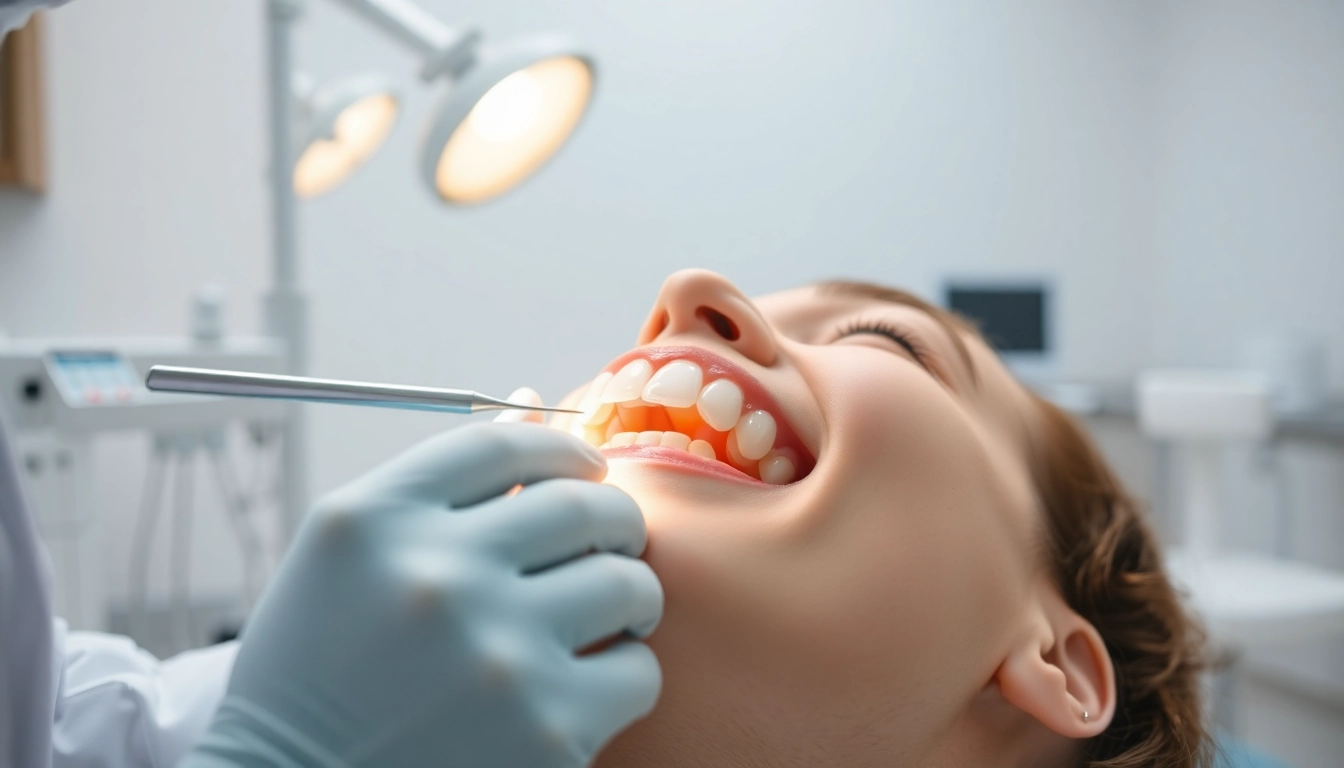Introduction to Dental Crowns
Dental crowns, sometimes referred to as caps, are prosthetic devices that are used to restore the shape, size, strength, and appearance of a damaged tooth. These restorations play a critical role in modern dentistry, providing both functional and aesthetic benefits. Crowns can be placed over natural teeth that are compromised due to decay, damage, or after procedures such as root canals. They are also used to secure dental bridges or cover dental implants. Understanding the various aspects of dental crowns, including their types, procedures, care, and costs, can empower patients to make informed decisions about their oral health. If you’re curious about how crowns might benefit you, continue reading to explore all there is to know about these common dental restorations.
What are Dental Crowns?
A dental crown is essentially a tooth-shaped cap that is placed over a weakened or damaged tooth. This cap restores its health and functionality, while also enhancing its appearance. Crowns are custom-made to fit snugly over the patient’s existing tooth structure after it has been prepared by a dental professional. The crown is bonded to the tooth, providing support and protection. The materials used to create dental crowns vary, each offering distinct advantages based on the specific needs of the patient. The primary purpose of a dental crown is to restore a tooth that has been significantly affected by decay or injury.
Common Reasons for Dental Crowns
There are numerous situations in which an individual might require a dental crown. Some of the most common reasons include:
- Restoring a tooth’s shape and size after significant decay or damage.
- Supporting a tooth that has undergone root canal therapy.
- Covering discolored or misshapen teeth to enhance aesthetic appearance.
- Securing a dental bridge in place.
- Protecting a weak tooth from fracturing or holding together parts of a cracked tooth.
- Covering a dental implant.
Who Needs a Crown?
While anyone can potentially require a dental crown, certain demographic or health factors may increase demand. Individuals who have experienced severe tooth trauma, those with advanced cavities requiring extensive restoration, or those with prior treatments, such as a root canal, are common candidates. Additionally, people seeking cosmetic enhancements to improve their smiles might consider crowns for aesthetic purposes. Your dentist will evaluate your oral health and determine if a crown is the most suitable option based on your specific dental needs.
Types of Dental Crowns
Dentists utilize a variety of materials when fabricating dental crowns. Each type has unique properties that meet different patient requirements. Here’s a breakdown of the most commonly used types of crowns:
Porcelain Crowns
Porcelain crowns are the most aesthetically pleasing option available. They are designed to closely mimic the appearance of natural teeth, making them ideal for front teeth where appearance is key. Because they are biocompatible and resistant to gum irritation, these crowns are an excellent choice for individuals with metal allergies. However, while they provide a beautiful finish, they may not be the most durable option compared to other materials.
Metal Crowns
Metal crowns, typically made of gold, nickel, or other alloys, are renowned for their strength and durability. They withstand significant biting and chewing forces, making them suitable for back teeth where functionality is essential. One downside, however, is that they do not blend in with natural teeth, which could be a consideration for patients focused on appearances. Metal crowns may also have a higher risk of causing gum wear over time.
Composite Resins and Other Materials
Composite resin crowns offer a balance between aesthetics and functionality. They can be color-matched to your existing teeth and are often used for anterior teeth, providing a more natural look than metal crowns. However, they are not as durable over time, requiring careful consideration for placement. Additionally, there are other materials, such as zirconia, that provide a sturdy and tooth-like finishing, offering great benefits in terms of strength and aesthetics.
The Crown Procedure
The process of getting a dental crown typically involves multiple appointments. This procedure can vary based on the type of crown being used and the specific needs of the patient. Here’s an overview:
Initial Consultation and Diagnosis
The journey begins with an initial consultation, during which the dentist conducts a comprehensive examination of your oral health. This may involve X-rays or other diagnostic tools to evaluate the structure of your teeth and gums. The dentist will discuss your treatment options and the type of crown that best suits your needs, ensuring you are well-informed about the process.
Preparing the Tooth for a Crown
Once a decision is made, the next step is to prepare the affected tooth. This involves removing any decay and reshaping the tooth to ensure the crown fits correctly. If necessary, the dentist will also build up the tooth structure using dental material, especially if significant wear or decay is present. After the tooth has been prepared, an impression will be taken, which is crucial for creating a custom crown. Temporary crowns may be placed to protect the tooth while the permanent crown is created.
The Fitting Process Explained
When the permanent crown is ready—usually after a few weeks—you will return for the fitting appointment. The dentist will remove the temporary crown and ensure the fit and color of the new crown are accurate. Adjustments may be made to attain the perfect bite and alignment. If everything is satisfactory, the crown will be securely bonded to the tooth using dental cement, completing the procedure.
Care and Maintenance for Dental Crowns
To maximize the longevity and effectiveness of dental crowns, proper care and maintenance are essential. Here are some practical tips:
Daily Care Tips
Just like natural teeth, crowns require regular cleaning. It’s important to brush your teeth at least twice daily using fluoride toothpaste and to floss daily to prevent plaque buildup around the crown. Using an antimicrobial mouthwash may also help in maintaining oral hygiene. Regular dental check-ups should be scheduled, as your dentist will monitor the condition of the crown and surrounding teeth.
Foods to Avoid
Certain foods can adversely affect dental crowns. It’s advisable to avoid extremely hard foods that could chip or break the crown, such as hard candies and ice. Additionally, sticky foods, while often delicious, can dislodge temporary crowns and should be consumed with caution. Individuals with crowns should also be mindful of excessive staining beverages like coffee and red wine that could affect the color of certain crowns.
Signs of Crown Problems
Patients should be aware of signs that may indicate issues with their crowns. Symptoms such as persistent pain or discomfort, increased sensitivity to hot or cold, or a noticeable change in the crown’s fit may require prompt consultation with a dentist. Early intervention can often resolve any complications and prevent further dental issues.
Cost and Insurance Considerations
The cost of dental crowns can vary significantly based on several factors, including materials used, laboratory fees, and geographic location. Understanding these costs, as well as insurance coverage and financing options, can provide clarity for patients considering this dental restoration.
Price Ranges for Different Types
The price of dental crowns can range widely based on the materials used. Generally, here’s a rough estimate:
- Porcelain crowns: $800 – $3,000 per tooth.
- Porcelain-fused-to-metal crowns: $500 – $1,500 per tooth.
- Metal crowns: $600 – $2,500 per tooth.
- Composite resin crowns: $300 – $1,500 per tooth.
These price ranges may vary based on the dental office and specific circumstances. It’s advisable to discuss costs with your dentist upfront to avoid surprises.
Insurance Coverage for Dental Crowns
Many dental insurance plans cover a portion of the cost associated with crowns, particularly when deemed medically necessary. However, aesthetic crowns may not always be covered, so it is vital to review your plan and discuss this with your insurance provider. Certain plans might have waiting periods or limitations on the number of crowns covered annually, making it essential to stay informed about your policy details.
Financing Options for Patients
If you find the upfront costs of crowns prohibitive, many dental offices, including Aurora Borealis Dentistry, offer financing options to help spread the costs over time. This could involve monthly payment plans or third-party financing programs that make dental care more accessible. It’s beneficial to inquire about these options during the initial consultation as they may significantly alleviate the financial burden.



